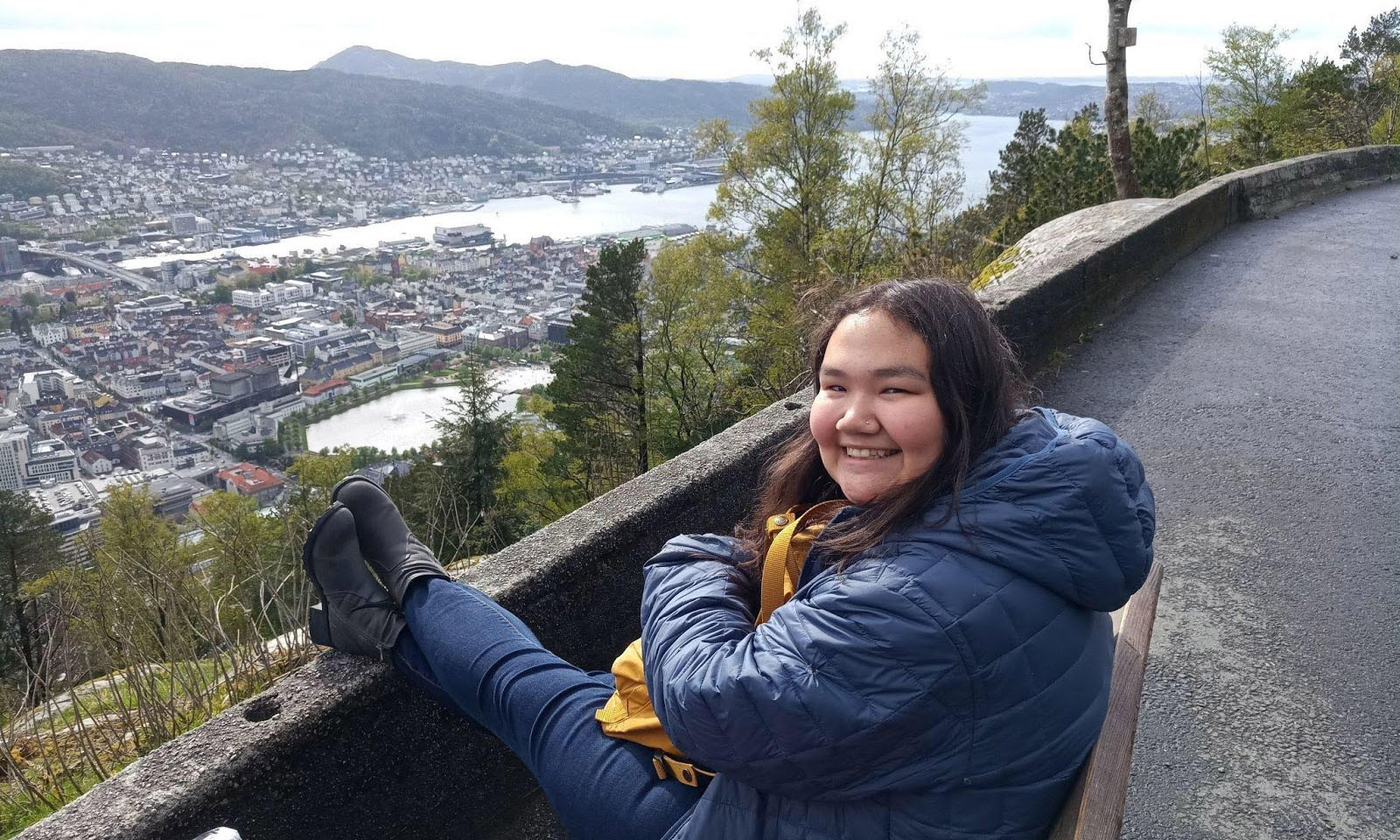Traveling!!! It’s one of the most essential and exciting parts of studying abroad. Each trip presents loads of opportunities for seeing more of your host country and the world. During these first six weeks of my study abroad journey in Spain, I’ve done lots of traveling. Here are a couple of the cities I’ve visited in Spain:
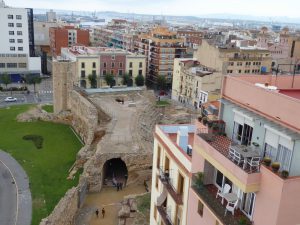
-Tarragona, a city of just over 100,000 people in the Cataluña region of Spain. An hour away from Barcelona, Tarragona is by no means a well-known city. Most people that I’ve talked with here in Alicante say they’ve never been to Tarragona but they have visited Barcelona multiple times.
However, there’s a lot to do and see in Tarragona. First of all, there are various Roman ruin sites that are spectacular (Tarragona gets its name from “Tarraco,” the ancient Roman city). With my flatmate from Japan, I went to a Roman circus, an amphitheater and an aqueduct.
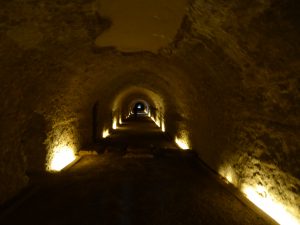
Each ruin site possessed its own intrigue and unique features. The circus, built in the first century, featured illuminated tunnels that were breath-taking. Although the amphitheater didn’t have any tunnels for us to explore, it was just minutes away from the beach, which gave us a really nice panoramic view.
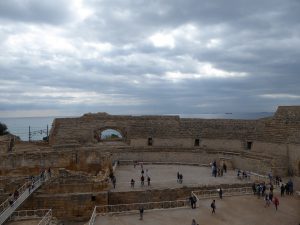
And then the aqueduct. By far my favorite of the ruin sites in Tarragona, the aqueduct is located just outside the city. We took a bus and then had to hike some nature trails to see the aqueduct, pero valió la pena (but it was worth the pain). Despite being built in the first century and no longer serving any aquatic purposes (the river is dried up), the aqueduct of Tarragona remains a very sturdy and symmetrical piece of Roman architecture.
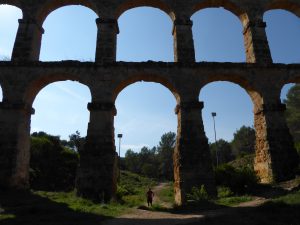
Oh, and did I mention that we walked across the aqueduct? And that, yes, it was perfectly legal? Walking across a two-thousand year old aqueduct/bridge/whatever-you-wanna-call-it is one of the coolest things I’ve done abroad and in my life.
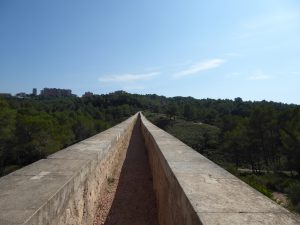
In Tarragona, my flatmate and I also visited a Gothic cathedral and the central market. Both were enormous and offered us glimpses into Catalonian culture and history. The cathedral featured impressive works of art from the Gothic and Renaissance eras. One of the most impressive features of the cathedral was a gigantic organ that stretched all the way to the ceiling. The outdoor garden was also delightful, with fountains full of turtles and koi fish to entertain us during a mask break.
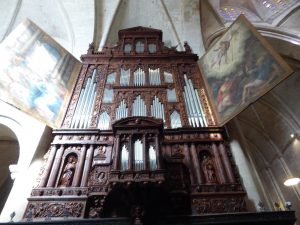
Later that day, we visited the central market of Tarragona. In Spain, nearly every city has a central market with local food and vendors. The markets also tend to be of significant historical value, so they can be really good places to learn about the city. In the central market of Tarragona, there were lots of meat products and fresh produce, but I ended up buying a bag of candies. Apparently the candies weren’t from the region but they were delicious anyways.
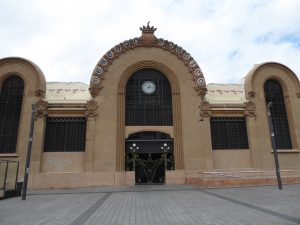
-Granada, a city in the south of Spain that possesses a unique blend of Moorish and Andalusian features. Last weekend, I visited Granada as part of my study abroad program’s itinerary. So, with 18 other Americans and our program director, I squeezed into a travel bus at 8am for a four hour ride–just the beginning of a non-stop trip that was fascinating but energy depleting.
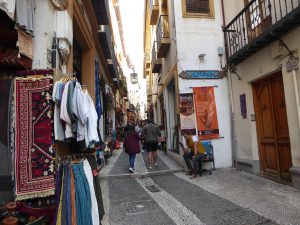
Fatigued and looking for rest, we arrived at our hotel. However, most of our rooms weren’t ready! So we had to scramble to store our belongings in the rooms that were open before heading to the Royal Chapel of Granada.
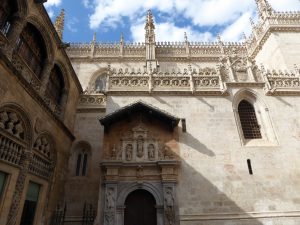
Things went more smoothly on our tour of the chapel. We were able to see lots of artwork (including original works of Botticelli) and even the tombs where King Ferdinand and Queen Isabella were buried hundreds of years ago. And outside the chapel, a woman was singing what appeared to be an Arabic hymn. The experience was surreal.
After visiting the chapel, we had a little down time, so I wandered around the Arabic shopping district. In the stores, I saw lots of lamps, earrings, necklaces and other shiny items from different parts of the Arabic world. I also stopped for some tea and a dessert at an Arabic tea shop. ¡Qué rico!
That night, most of the group went to see a flamenco show. I bought my ticket late, so I had to go solo to another show. While I was a bit bummed to not have any company, I soon discovered the joys of solo traveling. On my way to the flamenco show, I heard some music coming from the main plaza. And to my delight, lots of people were dancing there! So, I joined them for a bit before resuming my journey to the flamenco show. Considering all the spectacular things I experienced in Granada, my favorite was dancing with the community that night in the plaza.
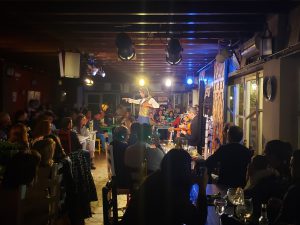
And then the flamenco show! The one I attended was in a restaurant and man, was it intense! There was loud singing, powerful string strumming, fiery dancing and toe tapping, and by the end, one of the dancers was spraying the audience with his sweat. Thank goodness I wasn’t near the stage!
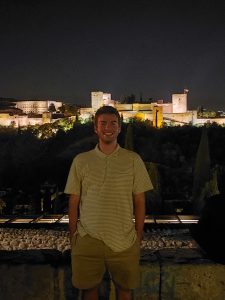
After the show, I met up with one of my classmates at the Lookout Point of Saint Nicholas. From there, we were able to see La Alhambra illuminated and city lights. It was so beautiful, but by the time we got back to the hotel it was already Sunday and we were completely exhausted.
We woke up at 8am to eat breakfast and clear out our rooms. Then the highlight of our trip: La Alhambra.
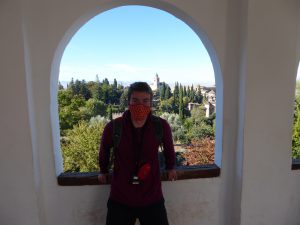
Words cannot describe how perfectly beautiful La Alhambra is, but I’ll do my best: flowers, green shrubs, water fountains, views of Granada, Moorish palaces that were built hundreds of years ago. Our guide said that the water was an important symbol of life for the Moorish royals–a point made by the presence of water all around us. Gorgeous. And the garden, the butterflies, the architectural designs, the views…Argh!!! Sometimes words are just insufficient so I’ll leave you with photos and sign off with that.
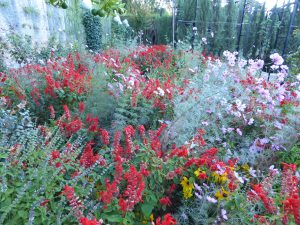
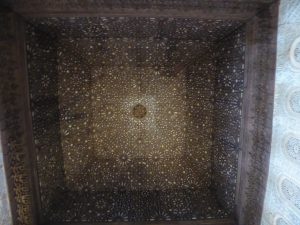
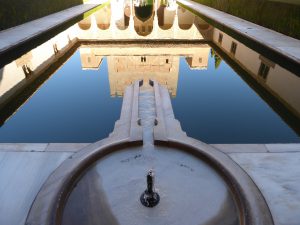
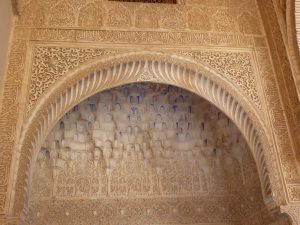
Hasta luego,
David Magnello
